Thank you for reading this post, don't forget to subscribe!
Most people know that the Pony Express system was created to deliver mail to the remote state of California during the time of the American Civil War. Prior to that, sending a letter from San Francisco to New York might take up to two months to get through. The federal government for a variety of reasons, the Civil War being a big one, needed a faster way to communicate with California and the Pony Express was the answer.
Russell, Majors and Waddell

What some might not realize about Pony Express history was that the system, while financially supported by the U.S. government, was indeed a private enterprise. It was a for profit company. The contract for this system was awarded to a freighting company by the name of Russell, Majors and Waddell headquartered in Lexington Missouri. The subsidiary of this company which operated the Pony Express was named the Central Overland California and Pike’s Peak Express Company. The parent firms other operations included stagecoach services, freighting and express.the sgag
Replacing the Butterfield Stage Line
The Pony Express system was launched with great fanfare from St. Joseph Missouri on April 3, 1860. This was quite a welcomed event in as much as the Butterfield Overland Stage Line which traveled with mail from Missouri to California via a southwest route through Texas and the New Mexico Territory was disrupted and abandoned due to Confederate operations in the southwest.
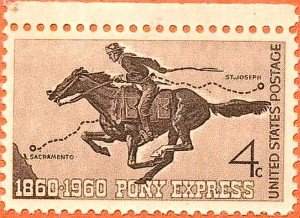
The Pony Express trail went from Missouri into Nebraska, Wyoming, the Utah Territory which included today’s state of Nevada and then into California via the Lake Tahoe area. It was this part of the route, the Utah Territory and in particular the Nevada portion that caused major disruptions.
Often, when we talk about the Pony Express, we talk about the brave young riders who carried their mochila’s through all types of weather, day and night. The story I’m telling in this article has to do with the people who operated the Pony Express stations along the route through Nevada. The story has to do with a war and massacres that transpired during the very first months of the Pony Express operation.
Today’s Nevada was home to the Paiute Indians. In a story similar to other Native American conflicts, the Paiutes were tiring of the American frontier advances. In the book, The Saga of the Pony Express, author Joseph J. Di Certo points out that the ill will started as far back as the 1830’s with fur trappers entering the area.
Shoshone Indians around the Humboldt River area were allegedly fired upon by the trappers. The intent was to send out some kind of warning. On one occasion, trappers shot and killed about twenty-five Shoshone just standing on the rivers opposite bank. The ‘warning” of course had the opposite effect. Rather than being intimidated, the Indians in Nevada became filled with hatred against the whites.
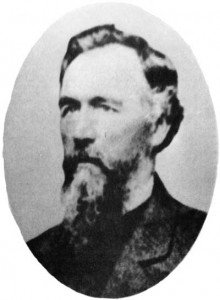
Years later in 1849, thousands traveled along the same route that would be used by the Pony Express heading to the California gold fields. History chronicles many instances of violence meted out by the gold seekers toward the Native Americans they encountered along the way. The federal government intervened with a treaty designating boundaries for the Indians as a way to stop the violence, but like treaties that would be made in later years, they were not fulfilled.
Another factor which may have contributed to the troubles was that Chief Winnemucca died in 1859. He had a reputation as being an ambassador of sorts and had success keeping the peace. In 1860 of course, his influence was gone. The present Paiute High Chief was Numaga who didn’t seem to have the past chiefs patience. The Indians anger built up over decades. Unfortunately for many, and in particular Pony Express station keepers, the anger boiled over in May of 1860, just a little over a month after the Pony Expresses inaugural run.
What resulted was a war referred to as the Paiute War. Sometimes it’s referred to as the Washoe Indian War or the Pyramid Lake War. Whatever you choose to call it, it was a bloody affair that threatened the very existence of the Pony Express. In particular, it brought great danger to the men who operated both the Pony Express relay and home stations.
Consider that there were no army posts anywhere in the immediate area of conflict. Try to imagine for a moment, operating a relay station in this area of Nevada alone. In some cases perhaps with two or maybe three others to help out. Your structure was probably made from wood and at night it would be as dark as it could get. At the same time, you’re aware that the Indian anger has reached the tipping point. You’re on your own and very outnumbered. This might have been the most dangerous job at it’s time in North America.
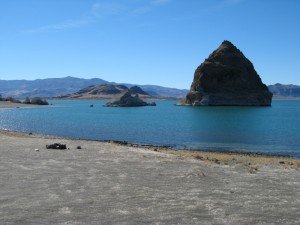
The Day Was May 7, 1860
The spark that touched off violence and killing reportedly was as a result of an alleged kidnapping and assault on Paiute women. You could call it the last straw. A war council was held near Pyramid Lake and some hotheaded warriors didn’t wait for a decision. Although there were some opposed to war, the warriors rode off and their first target was a Pony Express station called Williams Station on the Carson River.
It was the people at this station who allegedly assaulted the squaws. In short order, the station was attacked. A man named J.O. Williams and his two brothers operated the station and as luck would have it, or bad luck, three visitors had just stopped by before the attack. There was a fight but the six men were overpowered. All six were killed by the Paiutes and the station burned to the ground. The warriors then headed for Buckland’s Station just to the west and dispersed cattle owned by a local rancher.
The Station Operators Were Sitting Ducks
To be sure, the Pony Express riders put up with many dangers and some lost their lives in the course of their duties. Compared to the station operators they probably had a better situation. Being on a fast horse, and the Pony Express horses were fast, you had a better than not chance of outrunning attacking warriors. The station operators were both taken by surprise and were greatly outnumbered. They also didn’t have a fortress as protection. These disadvantages would be apparent in the coming days and weeks.
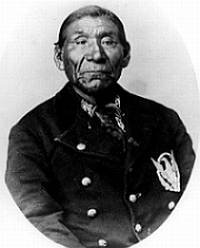
In the book, The Saga of the Pony Express, the author writes that upon hearing the news of Williams Station, over one hundred men from the Carson City and Virginia City area organized and headed for Pyramid Lake. They were armed and the Indians had bows and arrows but the Indians had seen them approaching and laid a trap. In the ensuing battle about forty of the whites were killed. the remainder fled. Then in late May about eight hundred men set out after the Paiutes and were successful in driving them into the mountains. There was a pause but the war was far from being over.
Links to our related photo articles you’ll be interested in include the Annual Pony Express Re-Ride and A Visit to Old Town Sacramento California.
Also see our article Western Frontier Generals / Crook and Miles
The Paiute War Continues Against the Pony Express
The next attack was on Egan’s relay station. Two men there were attacked and after the Indians ate and took food supplies, they were to be burned at the stake. The tale is that at the very last moment a loud sound of hoof beats was heard and the Indians were driven off. The hoof beats were from a detachment of soldiers who went past the relay station and laid chase after the attacking Paiutes. The soldiers presence couldn’t have been a minute too soon. Unfortunately, those very same warriors later that night attacked the Schell Creek station and killed it’s three operators. The situation was out of control.
The next attack was on Dry Creek station. The Indians killed one man who was outside preparing breakfast, another was shot in the doorway and two remained inside to fight it out. A trader who lived across the road somehow made it inside the Pony Express station. The story here is that the wounded man shot himself in the head and the two remaining men incredibly made a safe getaway with the trader. The trader convinced the men that he had good relations with the Indians and they were not likely to shoot at him. Amazingly, he was correct and the three made it safely away.
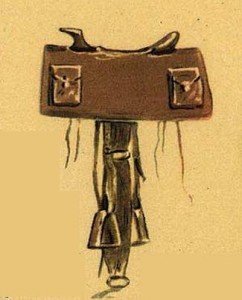
On another day, a Pony Express rider rode into Deep Creek station only to find that his replacement rider was nowhere to be found. The station operator didn’t have a clue but it turned out that the replacement rider had been killed by Indian warriors.
In yet another incident that certainly had a better ending for the station operators, seven Indians rode up to Willow Creek station asking for food. The operator offered them a sack of flour but the Indians insisted on one sack per brave. The short tempered operator drew out two pistols and ordered them to leave. Seeing that they were out armed the Indians left. On the way out they shot arrows into a cow and the station operator replied by shooting two Indians off their horses.
It’s important to recognize that both the station keepers and the riders were well aware of the massacres and killings during the Paiute War. Even with this knowledge, both continued to fulfill their duties although, in the case of the station operators, their firearm was always within an arms reach.
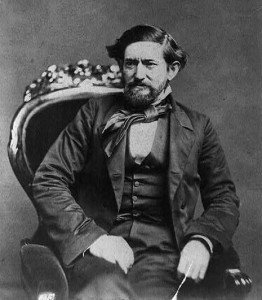
Putting an End to the Violence
There were countless other attacks on both Pony Express stations and riders. Many more would be killed. The citizens of the Carson City and Virginia City area called upon a famous Texas Ranger Colonel, John C. Hays, to help organize a force. Hays was a legend in his own time by his activities fighting the Comanches in Texas and by his successes during the Mexican American War.
Hays responded and organized thirteen companies of volunteers. The U.S. Army also responded by sending an artillery and infantry detachment from Fort Alcatraz in San Francisco Bay. The second battle of Pyramid Lake involved both Hays’ volunteers and the regular army. During this battle, about 160 Paiutes and four whites were killed. After this battle the federal government built a small fort at the southern end of Pyramid Lake. Captain Joseph Stewart of the U.S. Army eventually commanded Fort Churchill near Buckland’s Station.
Conflict continued into the summer months although on a smaller scale. In August of 1860, an informal truce was agreed upon with Paiute Chief Numaga.
The number of Paiutes killed during this war was not that large as a percentage of the population. Rather, it appears that Indian hardship and starvation during this war, and actually caused by the war itself, was the main reason the cease fire was achieved. The army abandoned the fort at Pyramid Lake in 1861. Amazingly enough, a formal peace treaty was never signed. As a historical note, the Paiute War was the only time that the Pony Express system experienced a disruption of services. The ten day Missouri to California timetable was intact at all other times.
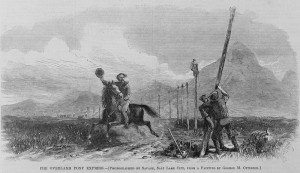
The End of the Pony Express
As most know, the Pony Express was a short lived affair, lasting only about eighteen months. In fact, it’s successor, the telegraph, was being built all during the time that the Pony Express operated. As far as the Pony Express owners were concerned, it proved to be a losing investment although all involved were very aware that it was only a matter of short time until the telegraph lines were completed. The book Saga of the Pony Express writes that during the lifetime of the system, the Pony Express covered a total of 616,000 miles and delivered, 34,753 letters.
While the Pony Express was the highlight of the Russell, Majors and Waddell partnership, the company never recovered from their financial losses. Waddell was ignored by his high powered friends and died in 1873. The most successful of the three was Alexander Majors who paid off his debts and established a small freighting company in Idaho and Montana.
Pyramid Lake Paiute Tribe Museum and Visitors Center
Exhibits at this excellent multi-purpose museum describe the Paiute tribe’s history and culture and offer insight into why the Paiute people hold the lake and its surrounding landscape so sacred. The Pyramid Lake War of 1860 was the largest confrontation between Native American Indians and whites in Nevada’s history. If you’re traveling from the west, take I-80 east bound, exit at exit 18 (Pyramid Lake/SR 445) and head north 35 miles. This will take you to the museum.
Pony Express National Museum
The Pony Express National Museum is located at 914 Penn Street, St. Joseph Missouri. This is the site of the old Pony Express stables which today house an interactive museum. The exhibits found at this very historic site chronicle the need, creation, operation and eventual termination of the Pony Express. If your vacation plans take you to Missouri, this makes an excellent addition to your trip planner and is a great stop for the entire family.
An excellent book I’d recommend to learn more details about the Paiute War of 1860 is Sand in a Whirlwind: The Paiute Indian War of 1860 by author Ferol Egan.
(Photos and images are from the public domain)
